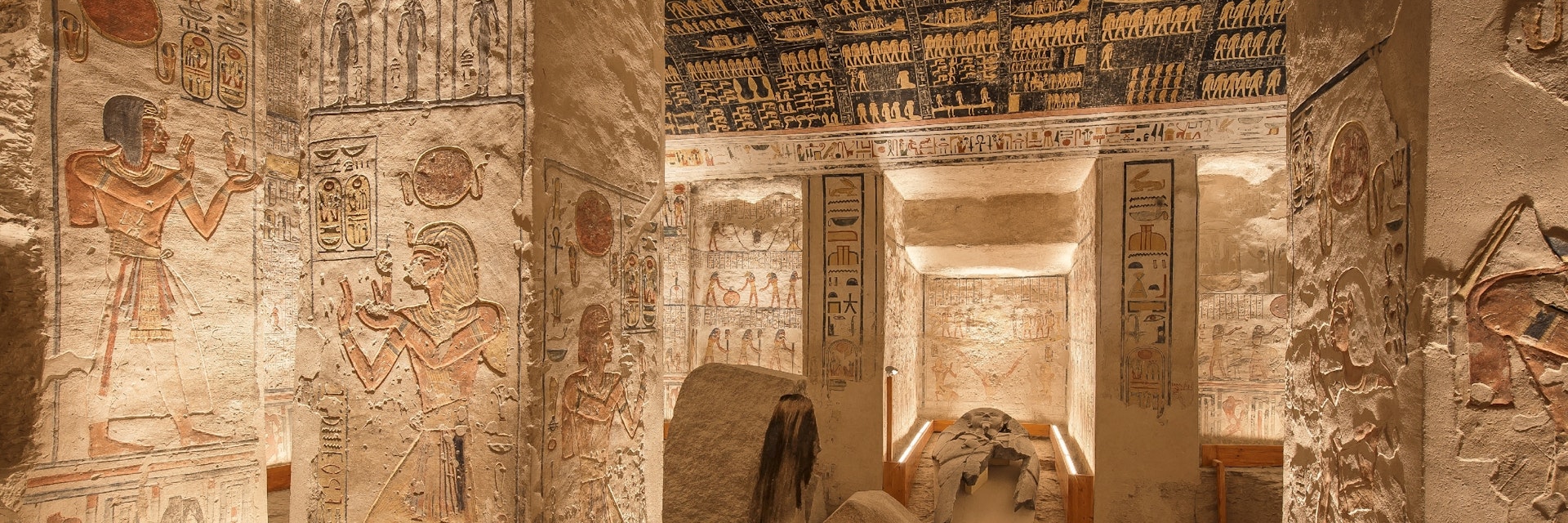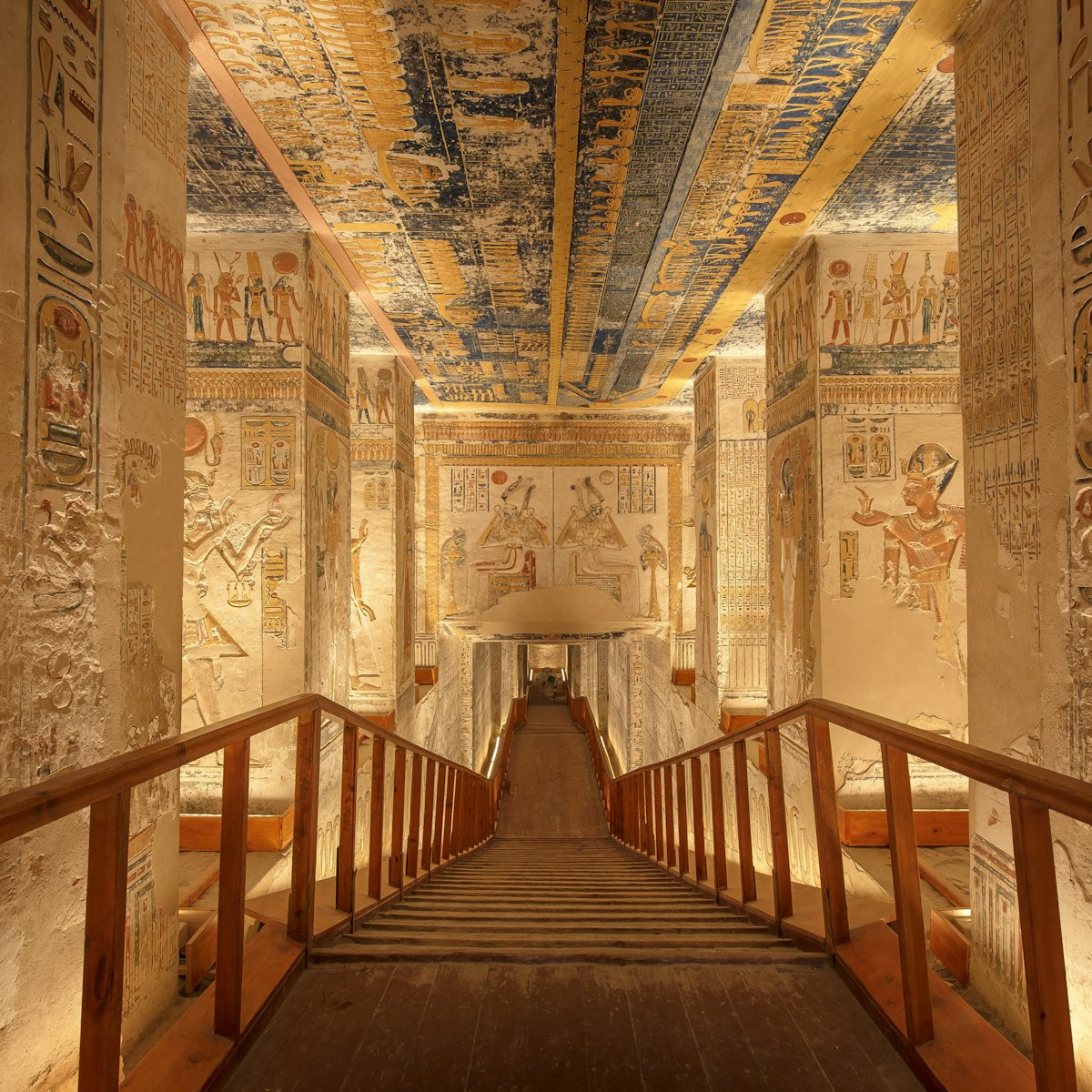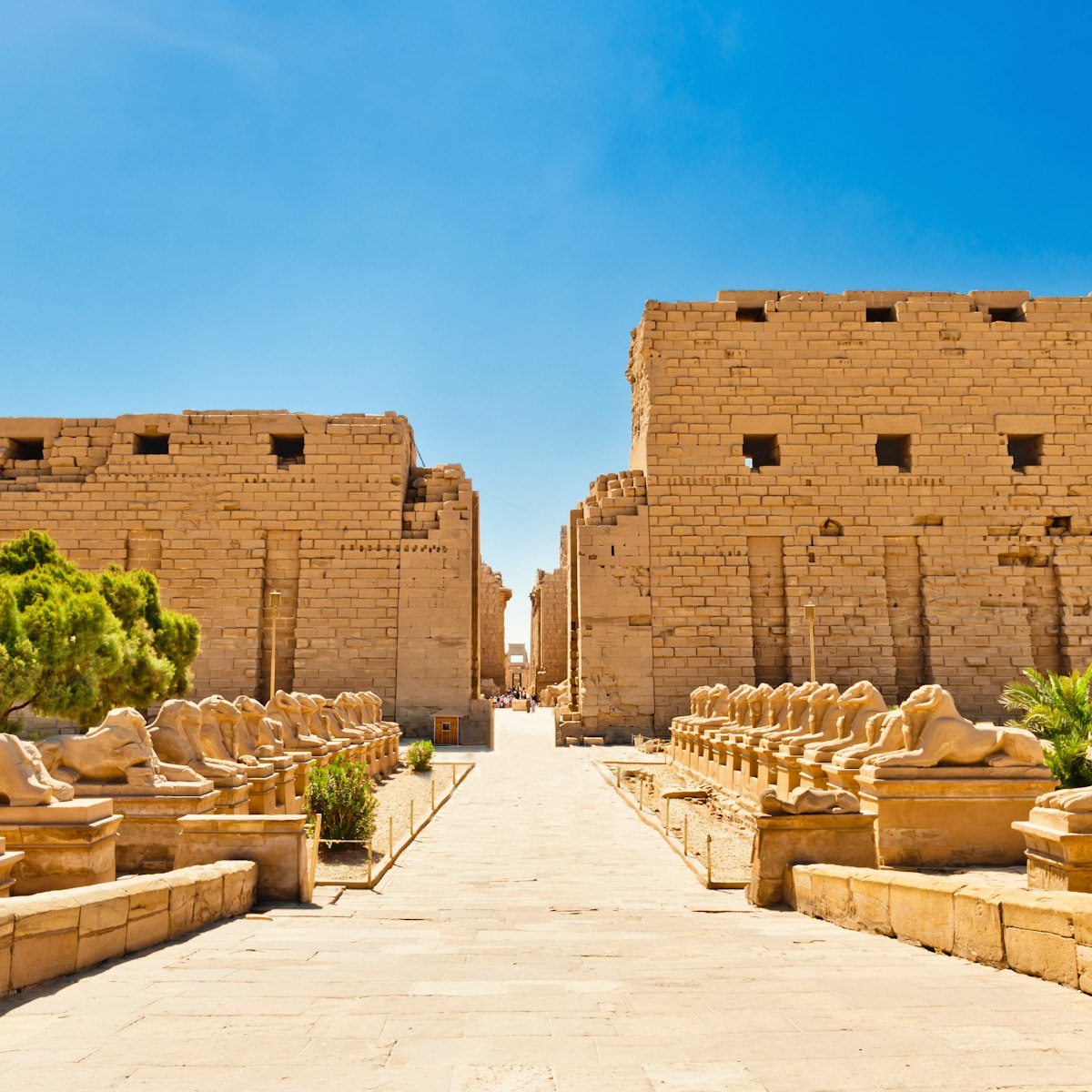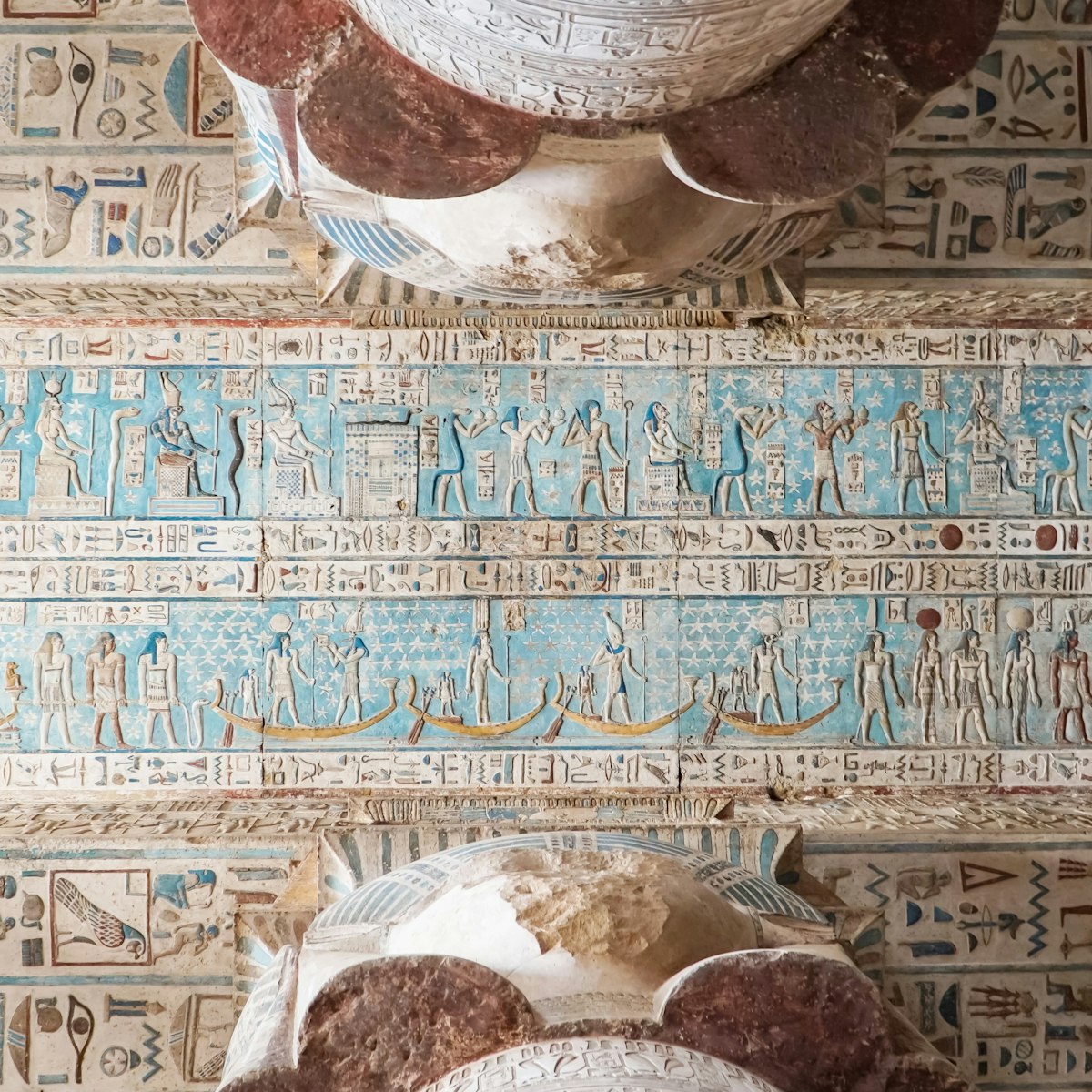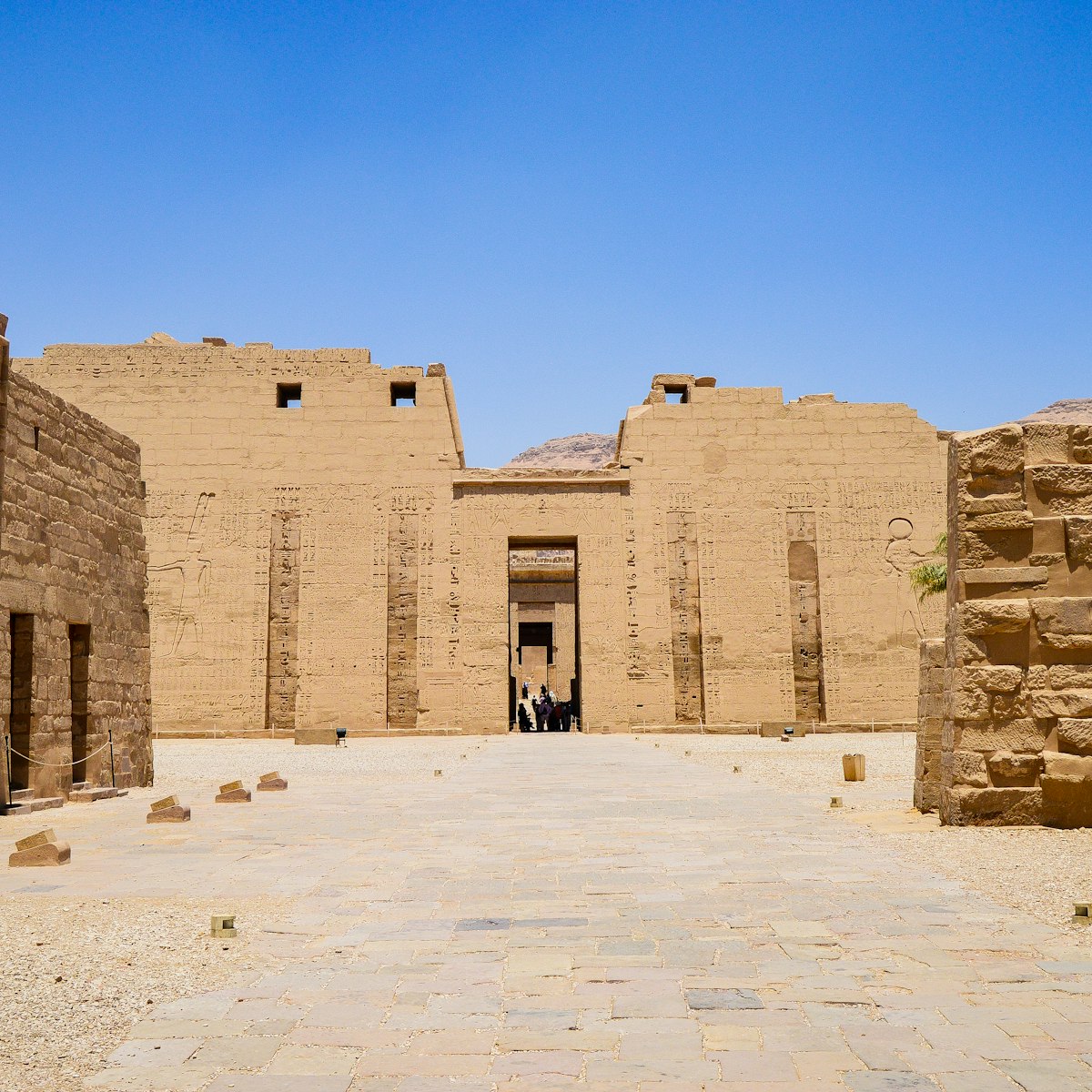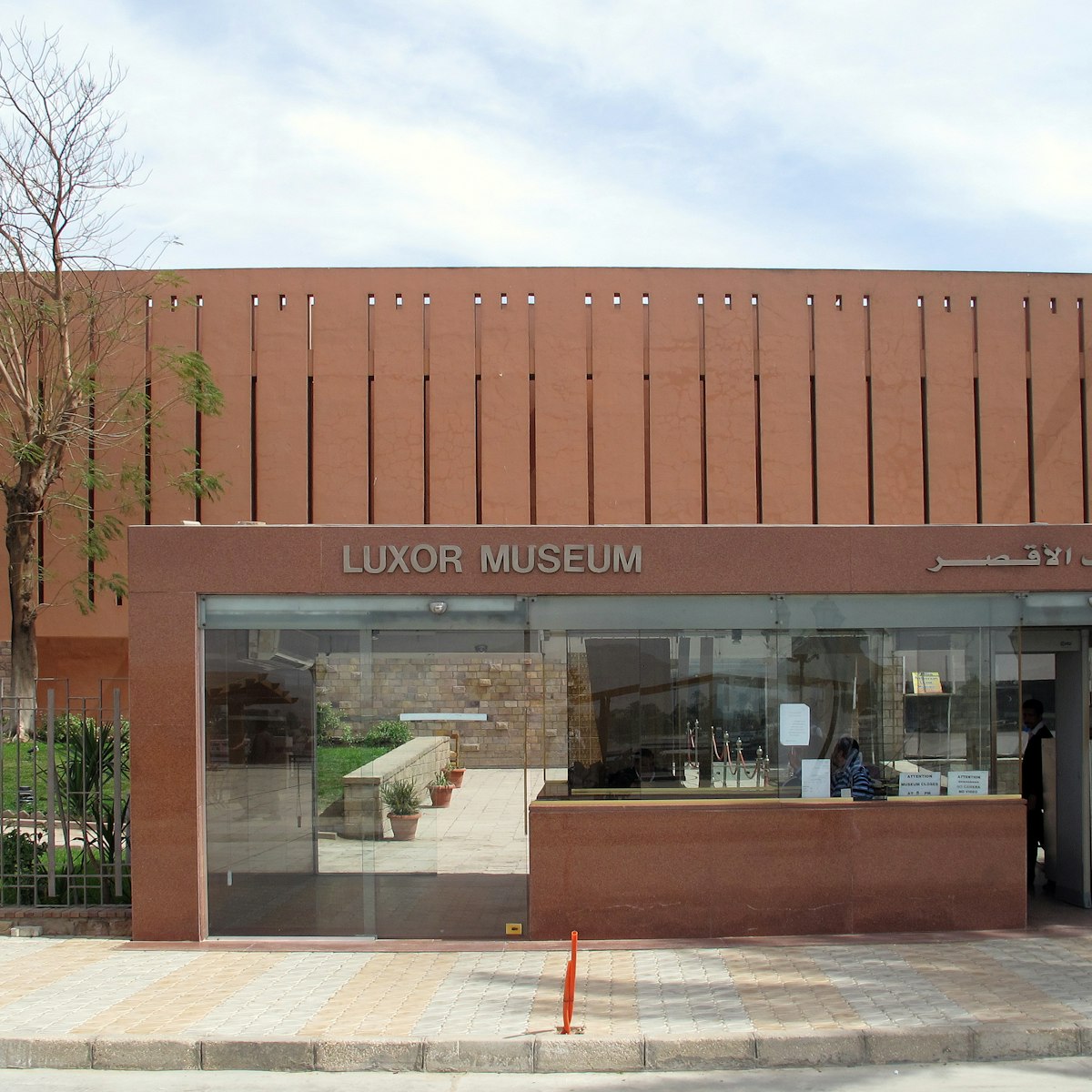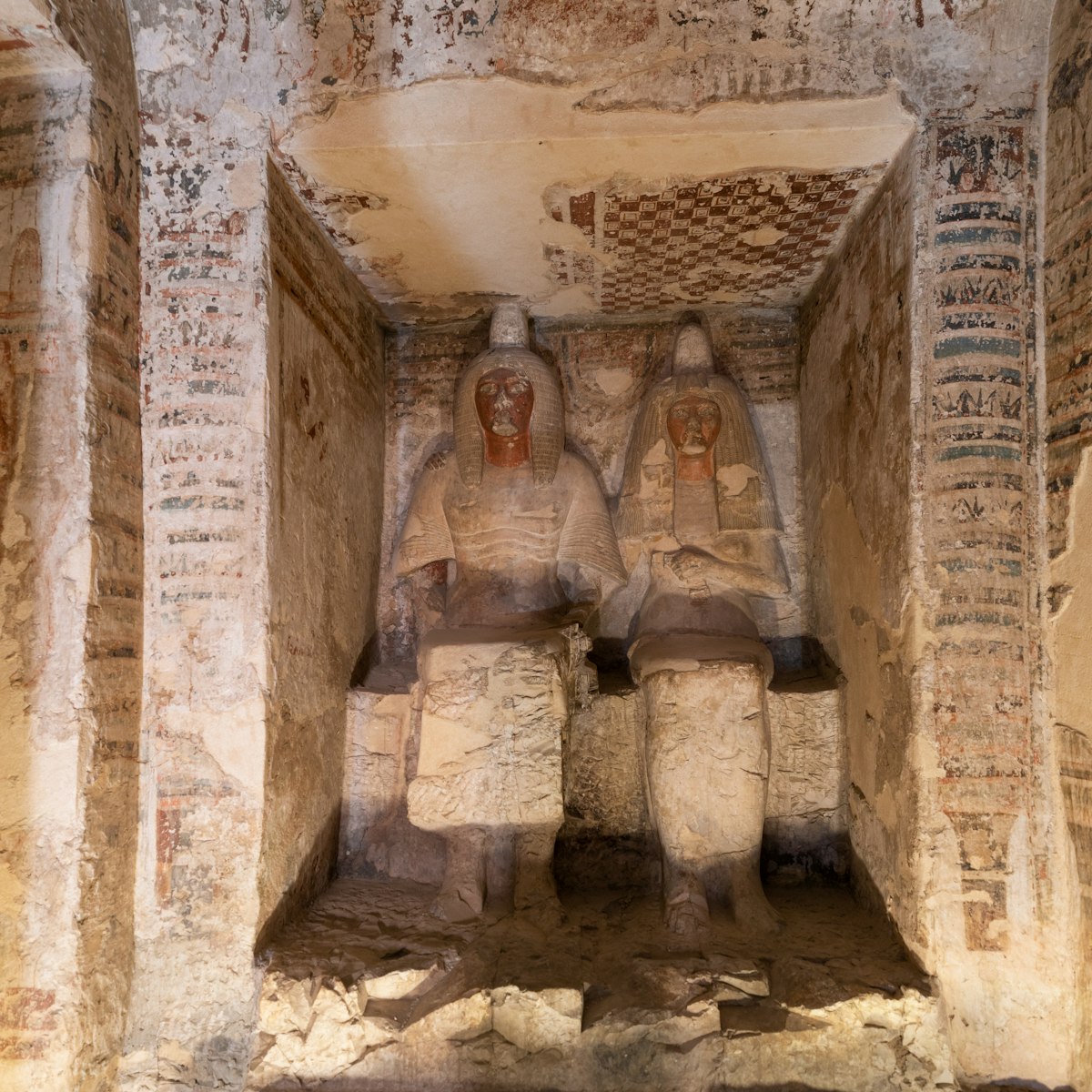With some of the broadest corridors, longest shafts (117m) and greatest variety of decoration, KV 9 is one of the most spectacular tombs in the valley. Started by Ramses V and finished by Ramses VI, it is a feast for the eyes, much of its surface covered with intact hieroglyphs and paintings. The burial chamber has an unfinished pit in the floor and a magnificent figure of Nut and scenes from the Book of the Day and Book of the Night.
Tutankhamun’s tomb remained intact until 1922 largely thanks to the existence of the neighbouring tomb of Ramses VI, which acted as an unwitting cloak for the older tomb's entrance. KV 9 was begun for the ephemeral Ramses V (1147–1143 BC) and continued by Ramses VI (1143–1136 BC), with both pharaohs apparently buried here; the names and titles of Ramses V still appear in the first half of the tomb. Following the tomb’s ransacking a mere 20 years after burial, the mummies of both Ramses V and Ramses VI were moved to Amenhotep II’s tomb where they were found in 1898 and taken to Cairo.
Although the tomb’s plastering was not finished, its fine decoration is well preserved, with an emphasis on astronomical scenes and texts. Extracts from the Book of Gates and the Book of Caverns cover the entrance corridor. These continue into the midsection of the tomb and well room, with the addition of the Book of the Heavens. Nearer the burial chamber the walls are adorned with extracts from the Book of Amduat. The burial chamber itself is beautifully decorated, with a superb double image of Nut framing the Book of the Day and Book of the Night on the ceiling. This nocturnal landscape in black and gold shows the sky goddess swallowing the sun each evening to give birth to it each morning in an endless cycle of new life designed to revive the souls of the dead pharaohs. The walls of the chamber are filled with fine images of Ramses VI with various deities, as well as scenes from the Book of the Earth, showing the sun god’s progress through the night, the gods who help him and the forces of darkness trying to stop him reaching the dawn. Look out for the decapitated kneeling figures of the sun god’s enemies around the base of the chamber walls and the black-coloured executioners who turn the decapitated bodies upside down to render them as helpless as possible.
